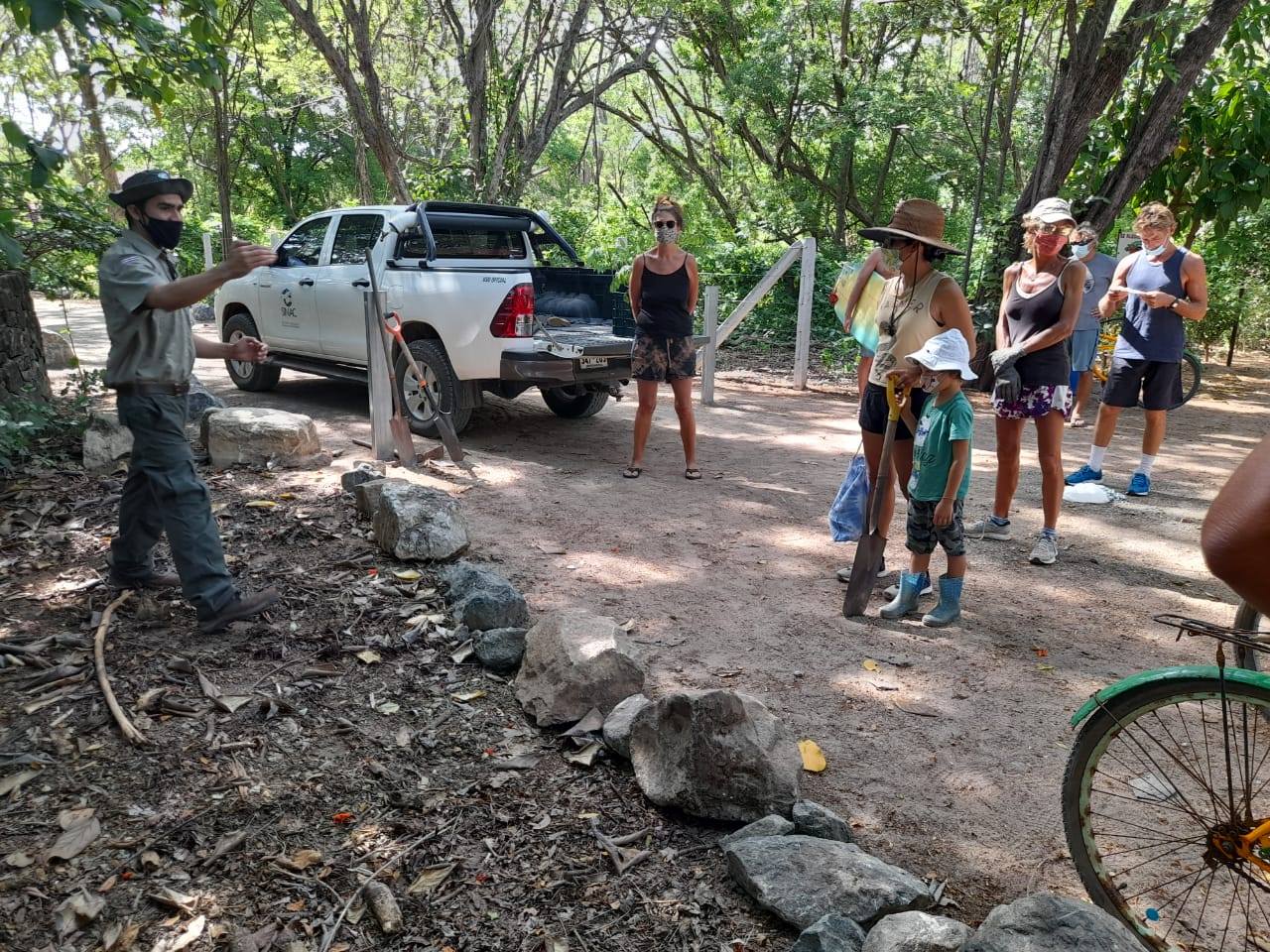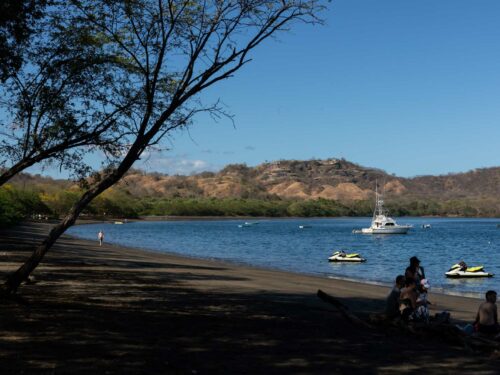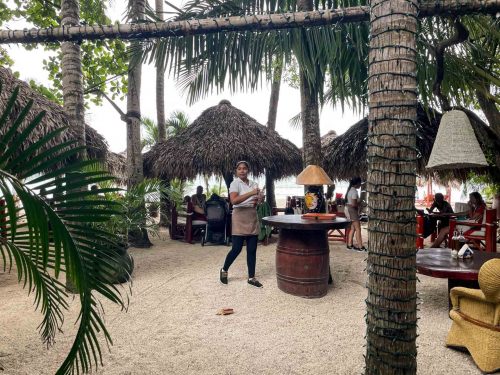
On April 29, a Tamarindo resident posted a video on Facebook denouncing the closure of a public access to Grande Beach in Santa Cruz. “What can be done in these cases when you lose public access now where you’ve walked for years to go from Playa Grande to Tamarindo and vice versa,” the person wrote.
In the video, a man —identified as Steve, who apparently lives in the area— is observed finishing installing a chain attached to two pillars to restrict the flow of vehicles. He also placed stones on the sides of the public access to prevent it from being used as parking. The people recording the video complain about what he is doing.
The video has been viewed 49,000 times, has been shared 1,600 times, has received 251 comments, and the vast majority of reactions to it have been negative. “Unbelievable, a gringo closing a public street.” “Hopefully this guy ends up in jail or, better yet, gets kicked out of the country.” And dozens of comments like these reproach what is observed in the video.
The video is taken out of context and doesn’t provide sufficient information to affirm that the citizen indicated actually closed access to the beach.
What he did was get a head start on a decision by a group of neighbors— including himself— and the Las Baulas National Marine Park, the park administration explained to The Voice of Guanacaste.
The person who posted the video later admitted that it was in effect just something to block vehicles. “The thing is that this is how it starts, a chain to not allow cars, and then what comes next? This is how privatization begins. That was a place where many SURF schools parked to lower their equipment,” the person commented.
La Voz tried to talk with the neighbor who published the video and with the indicated citizen, but they did not respond the request.
Why did they decide to limit vehicle access?
The access was used as a parking lot and on at least one occasion, a vehicle entered onto the beach, according to national park records. Taking vehicles onto beaches is prohibited in article 133 of the Traffic Law. In addition, according to the park’s General Management Plan, the access was not intended for use as parking, but just for pedestrian access.
As vehicles continue to enter, the vegetation decreases more and more and eroded space increases,” the park administration interim manager, Ana Maria Villalobos, told The Voice. “In the case of nesting beaches for sea turtles, compacting [the ground] prevents turtles from leaving their nest and causes them to be born deformed,” she said.
Villalobos explained that since the end of 2020, the park started making community management spaces available through the Blue Flag Program. “In mid-April, a group of residents who live near this entrance to the beach requested a meeting with the park administration to officially present their concern about a loss of vegetation that is becoming more evident each year,” said Villalobos.
Based on the constant meetings, they made decisions to mitigate the impact on the ecosystem due to the entry of vehicles and the loss of vegetation. Among the actions, they planned to reforest, block vehicular entry to the public area and mark off the access so that people who enter use the proper space so the entry path doesn’t become wider and wider.
Although they were thinking about doing these actions in one day on Saturday, May 15, the man and apparently other people from the community went ahead and did it without following the proper process.
“The error on the part of those who participated in doing it ahead of time not only generated bad publicity but also made the coordination and previous work invisible,” Villalobos remarked.
According to the official, the park intended to communicate to the community about restructuring the entrance, to mark it off officially with park personnel and to disclose the reasons for the decision based on the interest in conservation.
“It was a communication error,” Villalobos insisted. “Unfortunately the volunteers interested in doing the activity didn’t inform the park administration that they had the resources and wanted to coordinate a date to do it.”
On May 15, park officials and people from the community who participated improved the way the space was marked off because the rocks placed at the end of April didn’t take into consideration possible access for emergency vehicles, for example if someone at the beach requires medical attention, for fires or for dolphins stranded in the public area.








Comments